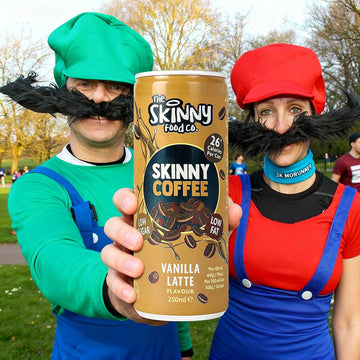Exercise Recovery : How To Avoid Exercise Injury

Exercise is an essential part of a healthy lifestyle, but it can also lead to soreness, fatigue and injury if not done properly. Fortunately, there are many methods of exercise recovery that can help you bounce back and get the most out of your workout. From stretching and foam rolling to cryotherapy and massage therapy, these techniques can help speed up your recovery time and keep you feeling refreshed and energised.
stretching after workout
Stretching is one of the most effective recovery methods for athletes and active people. It helps reduce soreness and stiffness, improves flexibility and range of motion, and reduces the risk of injury. Foam rolling can help break up knots in your muscles, improve blood flow to the affected area, and promote relaxation.
Does stretching after workout help muscle growth?
Stretching after a workout can help promote muscle growth and recovery. After intense exercise, your muscles are tired and need time to recover. Stretching helps reduce tension in the muscles, allowing for a better range of motion and increased flexibility. This increased flexibility helps enhance muscle development by stretching out tight muscles and allowing more oxygenated blood to flow through them. Additionally, stretching can also improve posture and balance, which can help prevent injury.
What happens if you don't stretch after a workout?
If you don't stretch after a workout, your muscles may not be able to fully recover. Without stretching, your muscles can become tight and sore, which can lead to increased fatigue and decreased performance during future workouts. Additionally, without proper stretching and recovery techniques, you may also be at an increased risk of injury due to weakened muscles that are unable to handle the stress of exercise.
It is recommended to wait 10-15 minutes after a workout before beginning any stretching or recovery techniques. This allows your body time to cool down and for your heart rate to return to normal. Additionally, this gives your muscles time to adjust back to their pre-exercise state and can help reduce soreness the following day. Once you have waited the appropriate amount of time, begin with dynamic
Protein for muscle recovery
Protein is one of the key components for muscle recovery. When you exercise, the body breaks down proteins in order to repair and build new muscle tissues. Eating enough protein after a workout can help replenish these stores and provide the body with the essential nutrients it needs for recovery. It’s important to consume a combination of both fast-acting and slow-release proteins in order to get the most out of your post-workout meal. Examples of fast-acting proteins include whey and casein, while slow-release proteins include eggs and lean meats.
Protein Shakes
Protein shakes are a convenient and effective way to get the protein your body needs for muscle recovery. Choose a high-protein, low-sugar shake and add other ingredients such as fruits, nuts or nut butter for added flavour and nutrition. Protein shakes can be used both before and after workouts for an extra boost of energy or to help replenish lost nutrients.
Protein Bars
Protein bars are a convenient and tasty way to get the extra protein your body needs for muscle recovery. Unlike protein shakes, protein bars provide a more substantial snack option that can help keep you energized throughout the day. Choose bars that contain at least 20g of protein and low amounts of sugar and carbohydrates for optimal benefits. Protein bars come in a variety of flavours and can be easily stored in your gym bag or desk drawer.
At The Skinny Food Co, we have a wide variety of delicious protein bars from Chocolate Brownies to Birthday Cake and our best-selling cookies & cream, and best of all they're less than 100kcal per bar.
Hydration for Muscle Recovery
It is essential to stay hydrated during and after exercise. Water helps your body regulate temperature, lubricate joints, and aid in digestion. It also helps your muscles recover faster by flushing out toxins and replenishing electrolytes lost through sweat. After a workout, aim to drink at least 16 ounces of water or an electrolyte-rich beverage such as coconut water. This will help replenish lost fluids and electrolytes, as well as reduce cramping and fatigue in the days following your workout.
Massage for Muscle Recovery
Massage is another great way to speed up muscle recovery and reduce soreness. Massage helps increase circulation, allowing more oxygen and nutrients to reach the muscles, as well as releasing built-up lactic acid. It can also help relax tense or overworked muscles, improve the range of motion, and relieve stiffness. For best results, try a sports massage after an intense workout or a deep tissue massage for more chronic pain.
How often should I get a massage for muscle recovery?
It is recommended to get a massage at least once a week for optimal results. However, if you are dealing with an injury or have a chronic condition that needs more attention, then you may need to schedule more frequent massages. Additionally, if you are doing intense physical activities such as running or weightlifting, it is beneficial to get a massage at least once every two weeks in order to
How to prevent muscle injury?
The best way to prevent muscle injury is to warm up properly before exercising and allow your body to cool down afterwards. Warming up helps increase blood flow and flexibility while cooling down helps reduce the stress on your muscles. Additionally, it is important to listen to your body and not push yourself too hard when exercising. Make sure you are getting enough rest between workouts and allowing your muscles adequate time to recover. Finally, make sure you are using proper form when exercising and don’t forget to stretch before and after your workout.



